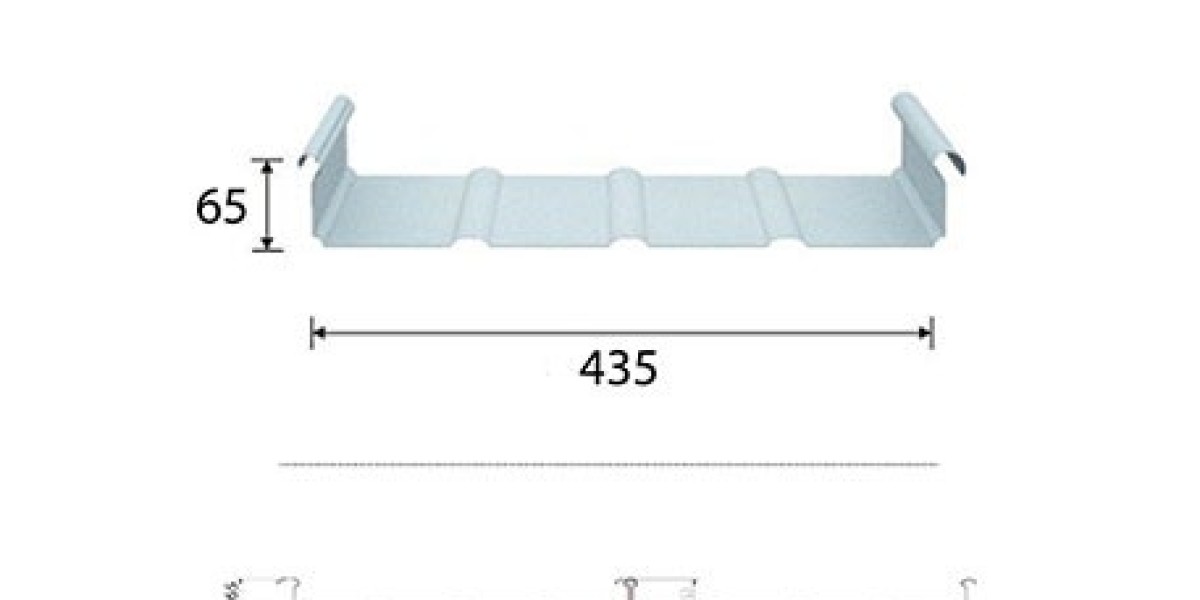Metal roofing, specifically a standing seam roofing system, is durable and modern and is a perfect option for commercial and residential properties. As the name indicates, standing seams refer to the vertical ribs or seams above the roofing surface. These seams are created by adjoining panels, which are locked in place to create a clean, sleek, and weather-resistant build. Its durability, style, and weatherproofing abilities are becoming increasingly popular.
What Is a Standing Seam Roof?
A standing seam roof is a type of metal roofing in which long metal panels are joined together vertically with raised seams. Any of these seams is sometimes called "standing" seams, as they stand up and away from the metal, protecting it from water infiltration. These plates are typically made of steel, aluminum, or copper, engineered to endure for decades with little upkeep.
Unlike traditional roofing methods like those that rely on shingles or tiles installed in overlapping rows, standing seam roofs consist of continuous panels, which means there are fewer seams through which water can potentially penetrate. Because of their continuously interlocked, watertight formation, standing seam roofs are ideal for areas with heavy rain, snow, or extreme weather.
What is a Standing Seam Roof?
There are five essentials to a standing seam roofing system:
Panels: Long, narrow metal strips that form the roof's bulk. They are bound up together and with their joints.
Seams: Standing seams are the vertical raised ridges formed where adjacent panels are joined. These seams are critical to keeping water from penetrating the roof.
Fasteners: The panels are held onto the roof structure with hidden clips or fasteners, contributing to the roof's integrity and longevity.
Flashing: Installed at roof edges, valleys, and around roof penetrations (such as chimneys and vents) to help ensure that water is adequately directed away.
Standing Seam Roofing Systems and its Types
There are two main types of standing seam roofs: mechanically seamed and snap-lock systems.
Mechanical Seamed Roofs: This type is formed by folding the panel edges against each other before locking them with a mechanical seaming tool. This yields a robust, weather-tight seam that is notable for inclement weather.
Snap-Lock Roofs: In the snap-lock system, the seams are interlocked without using tools. The panels’ edges snap together, speeding up and simplifying installation. While not as strong as mechanically seamed systems, snap-lock roofs are still very durable and will work well in milder climates.
Benefits of Standing Seam Roofs
Durability and Longevity: Standing seam roofs are also extremely durable. As a result, metal is an extra resistant material against the elements, wind, snow, and hail. More importantly, With the proper installation and care, a standing seam roof can last 50 years or longer.
Weather Resistance: Standing seam roofing is primarily made of metal, which makes it more resistant to water, snow, and ice than other materials. Raised seams keep water from pooling on or penetrating the roof surface, keeping your building dry and safe.
Due to their durability, the lack of seams also means that standing seam roofs have lower management and upkeep costs. The continuity of design decreases the likelihood of leaks, and metallic roofs are largely immune to storms or pest damage.
Energy Efficiency: Thanks to metal roofing's reflectivity, the amount of heat that enters the building is significantly reduced. This can lead to lower energy costs because your HVAC system will not need to run as hard to keep your system at a desirable temperature.
Aesthetic Appeal: The modern, streamlined look of standing seam roofs gives an architectural edge to any structure. Available in a range of colors and finishes, standing seam roofs can work with many design styles.
Eco-Friendly: Metal roofs and standing seam systems are both considered sustainable. They are also 100% recyclable, and most are made from recycled materials, further minimizing their carbon footprint.
Cons of Standing Seam Roofs
Higher Upfront Cost: Although standing seam roofs are very durable and ultimately save money in the long run, they also have a higher initial expense than other types of roofing, like asphalt shingles.
Time-Consuming: The installation process can be lengthy, as each panel must be carefully positioned and done so by professionals. This can increase the cost and complexity of the project.
Sound: Metal roofs can be noisier than traditional roofs during heavy rains or storms. Proper insulation can overcome this.
Conclusion
It is a sturdy, appealing, and dependable roof system for your residential or commercial buildings. Modern roofing solutions have featured TPO's long lifespan, resistance to extreme weather conditions, and low maintenance requirements. Although this may be at an increased up-front cost, the long-term benefits more than pay for themselves, particularly in properties located in areas with more extreme weather patterns.
For more about standing seam systems, consult an expert roofer to determine what works best for your building. They can walk you through materials, design, and installation options to help ensure your roof delivers long-lasting protection. Read more about the standing seam roofing system and its installation at TSSC Group.








